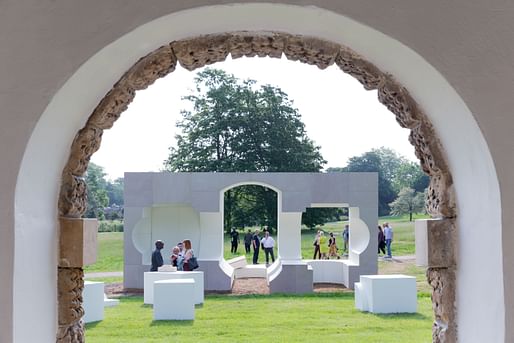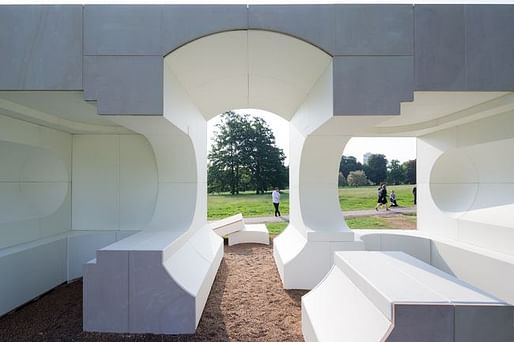

“While observing the building, we realized that the internal void was really a great quality to reveal, and so our building is really an inversion of that,” [Kunlé Adeyemi] explained.
“In a way, it’s a rotated from of the temple that highlights the interior space and also creates the fundamental purpose of what we think a summer house is: a place for shade and relaxation."
— Archinect
Kunlé Adeyemi of NLÉ's Summer House for the Serpentine Galleries is constructed in prefabricated sandstone blocks, similar to the stone used in Queen Caroline's Temple, the 18th century summer house that served as its inspiration.
While known for his modernist designs, Adeyemi focused on the form and proportions of the neoclassical Temple, developing his own design from the "voids," or negative spaces, of the original.

Archinect's U.K correspondent Robert Urquhart covered this year's Serpertine Pavilion in depth and had the chance to hear Adeyemi describe the pavilion in his own words.
"We’ve been able to use this opportunity to perhaps create a place [in line with what] we think is a tradition in London: a tradition of public space and some form of humour in architecture, somewhere that furniture design and material in context can all come together," Adeyemi states.
For more on this year's Serpentine Pavilion and Summer Houses, read Urquhart's feature here.

No Comments
Block this user
Are you sure you want to block this user and hide all related comments throughout the site?
Archinect
This is your first comment on Archinect. Your comment will be visible once approved.